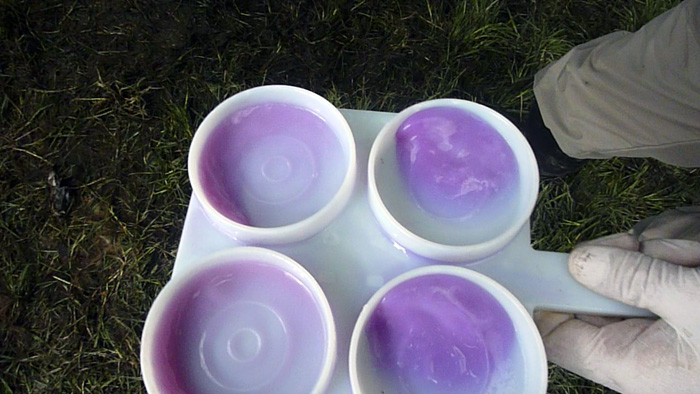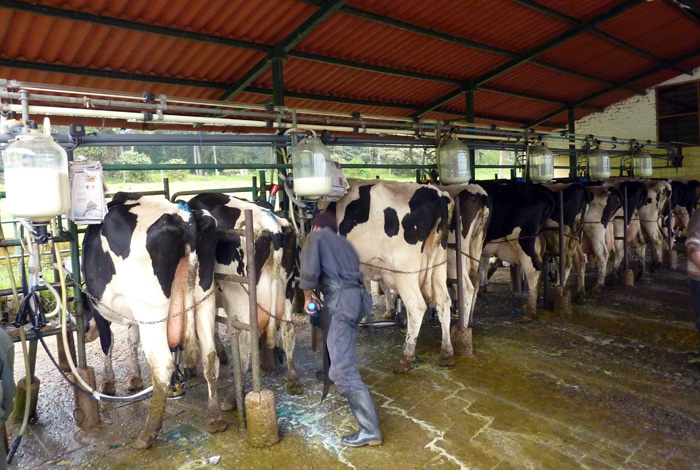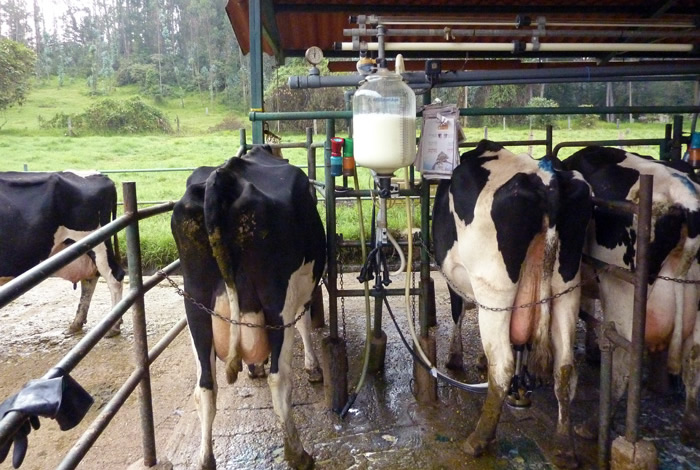Between 18% and 20% of cows in the most important milk zone in Cundinamarca (Valle de Ubaté, Sabana de Bogotá, Madrid y Mosquera) suffer from bovine mastitis, a bacterial disease that directly affects the compositional quality of milk, including fat and protein concentrations, calcium, phosphorous, and casein reduction, and increases of chloride and sodium.
These points are emphasized by a study made by the Group of Molecular Genetics of Pathogens (Gempa, for its acronym in Spanish), from the Faculty of Veterinarian Medicine and Animal Husbandry of Universidad Nacional de Colombia, which also found, for the first time in raw milk, the mecA gen from the bacteria Staphylococcus aureus, which is highly resistant to antibiotics.
"Milk that comes from cows with mastitis represents a potential risk for human health, not only due to the transmission of pathogen agents, but also for the presence of antimicrobial residues used for the treatment of the disease," asserted the Veterinarian Diego Benavides.
Since they are source of nutrients, milk and its derivatives are considered in the world as food that contributes to improve human health. The importance of its commerce in the country is shown in the figures presented by the Nacional Council of Economic and Social Politics (Conpes), which indicate that, during 2008, more than 5,500 million litters were commercialized. For this reason it is necessary to guarantee its quality from its primary production, which means, from the milking process, to consumption.
This process involves taking into account the aspects in its composition (fat, protein and total solids) related to its nutritional and industrial potential, and microbiological risks, referred to the presence of microorganisms that can affect consumer"s health.
Resistance
The potential emergence and dissemination of resistant microorganisms has been object for scientific research and normative intervention. The Food and Agriculture organization of the United Nations (FAO), the World Organization for Animal Health (OIE) and the World Health Organization (WHO) have addressed public health problems related to the use of antimicrobials in animas that produce food; for this reason, it is important to monitor the resistance in humans and animals.
In consequence, the presence of residues of medicinal products favors the emergence of resistant microorganisms. According to researcher Jenny Hernández, one example is S. aureus, whose mecA gen creates the resistance of the microorganism to "SARM" medicine.
On the other hand, beta-lactam antibiotics include a group of commonly used antibiotics in human and animal medicine, mainly penicillin and cephalosporins. "The resistance of bacteria to antimicrobials hinders the treatment of infectious diseases; for this reason, it is important to make studies and prevention campaigns," mentioned Martha Suárez, director of Gempa group.
Detection of the Gen
When evaluating the susceptibility of microorganisms to medical treatments, it was evident that resistance patters of the isolated strains are frequently present when penicillin is used.
Therefore, according to Hernández, the detection of mecA of S. aureus in milk samples coming directly from the primary production is relevant, resulting in emphasizing the importance of the control and prevention of chemical and microbiological risks from the farm.
"Frequently, this gene is evaluated in S. aureus coming from human patients, but it has never been studied in food (milk in this case), and less during its primary production. This is a high distribution pathological bacterium in nature, and it is associated to local, systemic infections and food-borne outbreaks," asserted the researcher.
Suárez explained that "in bovines, the infection that S. aureus produces in the mammary gland, known as mastitis, can be part of the entire breastfeeding.
Due to the problem that dairy herds have, the group of experts from Universidad Nacional de Colombia suggests managing antimicrobials properly in the farms by providing the animals the complete doses of the antibiotic on the period of time given by the veterinarian. While these cows are in treatment, the milk they produce cannot be consumed by humans.
Thus, the possibility that these microorganisms become resistant and have antimicrobial residues in dairy products and its derivates is diminished.
The study, supported by Colciencias and Sena, in alliance with the Nacional Council for the Quality of Milk and Prevention of Mastitis (CNLM, for its acronym in Spanish) contributes to create knowledge on the causes of this disease and the study of antimicrobial resistance in this important milk zone in Cundinamarca.
 Correo Electrónico
Correo Electrónico
 DNINFOA - SIA
DNINFOA - SIA
 Bibliotecas
Bibliotecas
 Convocatorias
Convocatorias
 Identidad UNAL
Identidad UNAL





